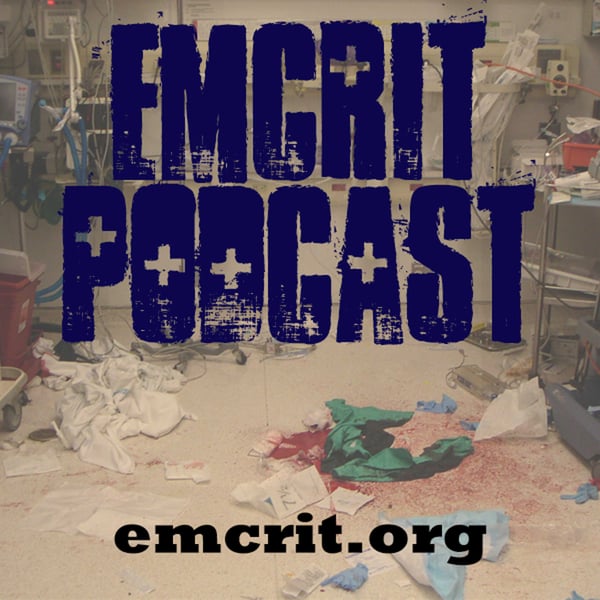EMCrit Wee - Did this Really Just HAPPEN? - The HAPPEN Trial Hot Take - NIPPV for COPD
EMCrit FOAM Feed
Scott D. Weingart, MD FCCM
4.8 • 2K Ratings
🗓️ 29 September 2024
⏱️ 36 minutes
🧾️ Download transcript
Summary
Transcript
Click on a timestamp to play from that location
| 0:00.0 | Hey folks Scott Weingard here and this is an am crit we. |
| 0:03.6 | So in the Jama a trial was recently published called the HAPIN trial. |
| 0:07.7 | It was for non-invasive positive pressure in COPD. |
| 0:11.2 | And I think it's kind of inexplicable it was published in the JAMMA but I think it's going to be a big trial in terms of people speaking about it so I wanted to get a take out there on Emcrut and there's no better people to discuss this with than my partner in |
| 0:25.0 | crime on M. Cret, Josh Farkas of the poem Cret blog and the Internet Book of Critical |
| 0:30.4 | Care. |
| 0:31.4 | And then Alexander Bracey, head of ED critical care at the |
| 0:35.2 | Albany Medical Center and Officinato of all things resuscitative non-invasive |
| 0:39.6 | positive pressure ventilation. So the three of us spoke about this trial. I'll do a quick |
| 0:44.4 | PICO. You can check out the trial and read it yourself for further details, but basically they took patients who were COPD and as you'll hear in the discussion, |
| 0:58.6 | I'm not quite sure like what you name this group because they're really they're not the encephalopathic |
| 1:05.4 | hypercapnick patients nor are they the patients in severe distress that you'd be like |
| 1:09.2 | mmm maybe I should intubate this patient if this non-invasive doesn't work, they're kind of this like middle group. |
| 1:15.7 | Their pH was less than 7.35. Their PAC-O-2 was greater than 45. They were put on non-invasive |
| 1:22.0 | for six hours at normal non-evasive settings and then if they still had a P.I.C.O. 2 greater than 45. |
| 1:30.0 | They were randomized to in a high intensity non-invasive group, which was shooting for a title volume of 10 to 15 |
| 1:42.8 | MLs per KG and they had a they could in order to do that they'd keep increasing the |
| 1:47.2 | IPAP up to a maximum of 30 centimeters of water and then there was a |
| 1:51.6 | quote-unquote normal group comparison group was shooting for a title |
| 1:55.0 | of high 6 to 10 ML per KG and they could go up to an IPAP max of 20. |
| 2:00.5 | And they were attempting inexplicably to get absolute normalization of P. I mean absolute as |
| 2:08.8 | and not the patient's normal, you know, calculating with their by-carb where you expect them to be, but like normal. normal you and |
... |
Please login to see the full transcript.
Disclaimer: The podcast and artwork embedded on this page are from Scott D. Weingart, MD FCCM, and are the property of its owner and not affiliated with or endorsed by Tapesearch.
Generated transcripts are the property of Scott D. Weingart, MD FCCM and are distributed freely under the Fair Use doctrine. Transcripts generated by Tapesearch are not guaranteed to be accurate.
Copyright © Tapesearch 2025.

